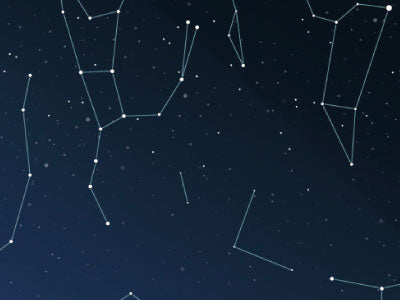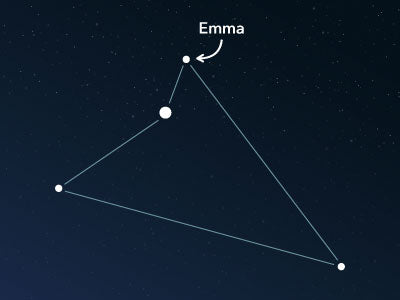The constellation Musca
Characteristics
- Other names / Symbolism
- Fly
- Hemisphere
- Southern hemisphere
- Visibility
- February - April
- Area
- 138 deg²
- Brightest star
- α Muscae (HIP number 61585)
- Specialties
- Dark cloud, star clusters, planetary nebula

The Musca symbolizes a fly, a term often used to name the star constellation. It is a small southern hemisphere constellation that is relatively easy to find in the night sky and contains some interesting objects to observe.
Hemisphere, visibility, and area
The Musca lies in the southern sky and is visible only up to 14° north latitude due to its position. This corresponds roughly to regions such as the group of islands Cape Verde, El Salvador, or Bangkok in Thailand. It can be seen from all locations in the southern hemisphere.
The optimal time for observing the constellation is from February to April.
It extends an area of 138 square degrees, making it one of the smallest constellations in the night sky. In comparison to all 88 constellations, it ranks 77th in size. Nevertheless, it is not difficult to find.
The brightest star in the Musca shines in the night sky with an apparent magnitude of about 2.69. Its name is α Muscae (Alpha Muscae), a blue supergiant star. Its luminosity is 5,000 times more intense than that of our sun. The star is approximately 320 light-years away from earth.
The shape of the constellation is also very distinctive. In some visualizations, four stars form a trapezoid shape with a star chain extending to the northeast. Other depictions show Musca as a triangle with a slight bend on the short side. The form could be reminiscent of a paper airplane.
Musca is located south of the constellations Crux and Centaurus. To the east, it borders the constellation Carina, while to the south lies Chamaeleontis. To the west, it borders the constellations Apus and the Circinus.
Specialties in the constellation
Through the constellation of Musca, the star-rich Milky Way stretches, providing a series of interesting deep-sky objects. Besides a dark cloud, there are two globular clusters, two open clusters, and a planetary nebula.
The dark cloud is a black hole located approximately 500 to 600 light-years from earth. It is also known as the Coalsack Nebula and is one of the most famous dark clouds in the night sky.
One of the two globular clusters is NGC 4833, which has an apparent magnitude of roughly 7.4. Its distance from the sun is estimated to be around 19,000 light-years. NGC 4833 is located on the border of the constellation of Crux and can be observed even with a small telescope.
The two open clusters were discovered in 1834 and 1835 by the British astronomer John Herschel. They are both rather inconspicuous.
The planetary nebula has the catalog number NGC 5189. The Scottish astronomer James Dunlop found it in July 1826. With an apparent magnitude of approximately 9.7, it is not exceptionally bright, but it can already be seen with a small telescope.

History
At the end of the 16th century, a Dutch fleet traveled to the legendary Spice Islands (now Indonesia) to establish new trade relations. On behalf of the astronomer Peter Plancius, more precise data on the stars were to be collected.
This led to the cartographer Frederick de Houtman and the Dutch navigator Pieter Dierkzoon Keyser measuring the positions of 135 stars. Finally, the two defined 12 new constellations, including the Musca, initially described as the Apis (Latin for Bee).
In a religious context, the Apis was associated with the story of the biblical figure Samson then. In this story, he encounters a lion, which he tears apart with his bare hands. Finally, he discovers a beehive with all kinds of honey in the carcass.
Only around 150 years later, in 1752, the Apis was renamed the Musca by Nicolas Louis de Lacaille and included under this name in the new celestial atlas.
Later, it was renamed "Musca Australis" (Latin for Southern Fly) to distinguish it from the "Musca Borealis" (Latin for Northern Fly). However, the latter constellation no longer exists today. Its few stars were assigned to the constellation Aries.
PublishedRead more interesting articles

An overview of all 88 constellations
Learn more about all 88 constellations and read interesting information about the mythology, visibility, and features.

Planetarium App
Discover the night sky with our planetarium app!
Available for iOS and Android.

Name a star in the constellation Musca
Name a star in a constellation and create something that lasts for eternity.